I don't know when it started, and it is popular in the home circle. It is popular among netizens around the world:
In the well-lit room, the wood-colored dining table is arranged in a simple and orderly manner. The clean fabric sofa and carpet, the soft-colored coffee table, and the decorative painting with plant patterns... the gray color matching, revealing a With a simple and simple style, in a fast-paced working environment, once you get home, everything is like returning to the original appearance of nature, which makes you feel extra peace of mind.

The new favorite of the fresh cut flower market, the Eucalyptus tree (Eucalyptus spp.), common species include "E. gunni'Silver Drop", E. cordata, E. cordata (E. Polyanthemos) and so on. Blue-gray leaves and fresh, camphor-like eucalyptus oil make them a favorite ornamental plant, potted, cut flowers, garden grown
This style originated from Instagram, and then the world's social media, but also created a proper term - Ins Nordic.
For the Ins Nordic style, which is minimalist or even a bit cold, how to maintain "vigor" is an eternal issue. At this time, the green plants that are dotted with them are the key elements that bring vitality. They don't need to have a slap in the face, they don't need a maverick posture, green leaves are not swaying, and simple but not monotonous plant types are the meaning of their "just right" existence.

The monstera and the monstera prints that are not good for the monstera are common in these two years.
Therefore, those ins of the Nordic wind net red plants that have received countless praises, after you have bought them home, how can we let them live as much as possible for a period of time instead of being a one-time flower arrangement? Come and share it with you today.
Qin Ye
Planting difficulty: ★ ★ ☆ ☆ ☆
Ficus lyrata is one of the brightly insulin red net plants in recent years. As can be seen from its name, it is a plant of the genus Sanko, native to the lowland rainforests of West Africa. In the wild they can grow to 15 meters high, indoors, and grow to 2 to 3 meters high is already a giant.

The leaves of the leaves are tall and straight, the leaves are as wide as a human face, the colors are green, and the luster is lustrous. Even if they are placed in the corner, they are very attractive.
They are very popular, mainly because they have the same leaves as the violin, the veins are obvious, the texture is thick, and the edges of the big waves, the simple atmosphere, is very suitable for the minimalist home decoration. If you can put them in a simple and pure cement pot, or put a woven bag of pots, you can be more coordinated with the surrounding environment.

The leaves of the piano leaves are very good with the simple style of home decoration, and the planting difficulty is not high.
Planting points
It is not difficult to raise the leaves of the piano in the room. Their demand for illumination is not very large, so they can be placed in front of the floor-to-ceiling windows in the south or in the darker rooms. Their suitable growth temperature is between 20 ° C and 30 ° C, and the winter indoor temperature is not lower than 10 ° C to successfully winter. If you can spray frequently and maintain a certain air humidity, if the leaves are topdressed properly during the Spring and Autumn Period, the leaves will become more oily, otherwise it may dry and yellow.
Monstera
Planting difficulty: ★ ★ ☆ ☆ ☆
Monstera is a relatively popular indoor ornamental green plant. Many ins are found on the Scandinavian wind photos, or even if there is no real monstera, they can be seen on the decorative painting on the wall.

As the Ins net red ushered in the second spring of the monstera
Monstera deliciosa is native to tropical Mexico. It is a climbing vine in the wild. It is also very happy to live in a warm city. So in the southern parks and in the courtyards of ordinary people, you can often find the shadows of monstera.
The monstera is actually not a bamboo, but a plant of the genus Monstera. The leaves of the monstera are broad heart-shaped leaves, the texture is leathery, and the oil shines brightly. The edges of the mature leaves are pinnately divided, and there are also circular gaps near the veins, which are named after the turtle's back.

People who raise too much meat are probably familiar with the phenomenon of “out of the brocade”, and many foliage plants will also produce brocade, such as the Monstera Deliciosa var. Albo Variegata. The essence of the brocade is the absence of chlorophyll in the leaves, the photosynthesis of the brocade plants is weakened, the growth of the plants will be affected, but the good looks are enough.
The plants of the monstera are beautiful and the leaves are elegant. They often bring a harmonious southern country. In the home decoration arrangement, the monstera is suitable for being placed in a relatively empty area. It will not grab the limelight of other furnishings, but also make up for it. The pale and powerless vacancies make the space more vivid.
Planting points
The monstera is more resistant to yin and moisture, and does not require much light for curing. The proper humidity can make the leaves more shiny. However, it should be noted that the monstera is not cold-resistant, and the indoor temperature in winter should not be lower than 10 °C.
Tigertail
Planting difficulty: ★★★☆☆
Sansevieria spp. Also known as Tiger Piran, it is a plant term for the agave family, which is named after the shape of the leaves and the streaks growing on it.

Sansevieria trifasciata 'Laurentii'. Upright growth, plant line simple and powerful tiger Piran, with geometric style, the home decoration effect will be very good
The tiger-tail orchid is a relatively common ornamental plant. The ground part is composed of erect thick and thick lanceolate strip-shaped leaves. The texture, color and shape of the leaves vary according to the variety.
The large-scale Huwei Lanting is suitable for placing on the side of large furniture to balance the visual and space functions. The small variety of Huweilan is small and exquisite, suitable for placing on a coffee table or a desk as a potted field.

Tigertail species 'Silver Queen'
In general, there are several varieties (large categories) of common tigertail orchids on the market.
Phalaenopsis chinensis: The leaves are gray-green with a prominent gold edge on the edges and irregular dark green stripes.
Silver-tailed tiger-tailed orchid: the leaves are gray-green, with a conspicuous white edge on the edges and irregular dark green stripes.
Silver-tailed tiger-tailed orchid: the leaves are silver-gray, the edges are dark green, and there are no horizontal stripes in the center of the leaves.
Tiger-tailed orchid: The blade is slender and long tubular, and the shape is more amazing.

Sansevieria cylindrica
Shell tiger-tail orchid: The leaves are short and small shell-like, arranged in two fan-like shapes, and the leaf colors and markings of different varieties are not the same.
Planting points
In the end, Huweilan is also a kind of succulent plant, and it is a fleshy species of summer type. It is strong in nature, relatively skin-skinned, and has few pests. During the growing season, it is only necessary to ventilate and reduce the amount of water supplied. . In winter, the indoor temperature should be kept above 5 °C.
In addition, the tiger-tail orchid can be used for vegetative reproduction. In the spring and autumn, a leaf is taken and cut into appropriate sections. After the wound is healed, it is inserted into the culture soil shallowly, and the water is sprayed to keep it slightly moist. A part of the soil buried in the soil will develop roots and grow new buds.
Staghorn fern
Planting difficulty: ★★★★☆
Platycerium spp. Platycerium spp. is a general term for the genus Staghorn genus, mainly distributed in the tropical rain forests of Southeast Asia. In Singapore, Thailand and other places, wild staghorn ferns are often seen climbing on trees.

Staghorn fern grown in Singapore Botanic Garden
The staghorn fern is very interesting because its leaves have two forms, one is a spore leaf that is bifurcated in the form of an antler, also called a fertile leaf. The spore leaves are drooping, the leaves are velvety, and there are fertile sporangia on the back; the other is the nutrient leaves, which are shield-like and are attached to the trunk in an interactive manner. The two blades complement each other and are very distinctive.
Different types of staghorn ferns, spore leaves and vegetative leaves have their own shapes and sizes, which can be selected according to your home decoration space and style.
If space is limited, you can choose from P. bifurcatum and P. alcicorn. Their spore leaves are long and drooping and do not take up too much space.
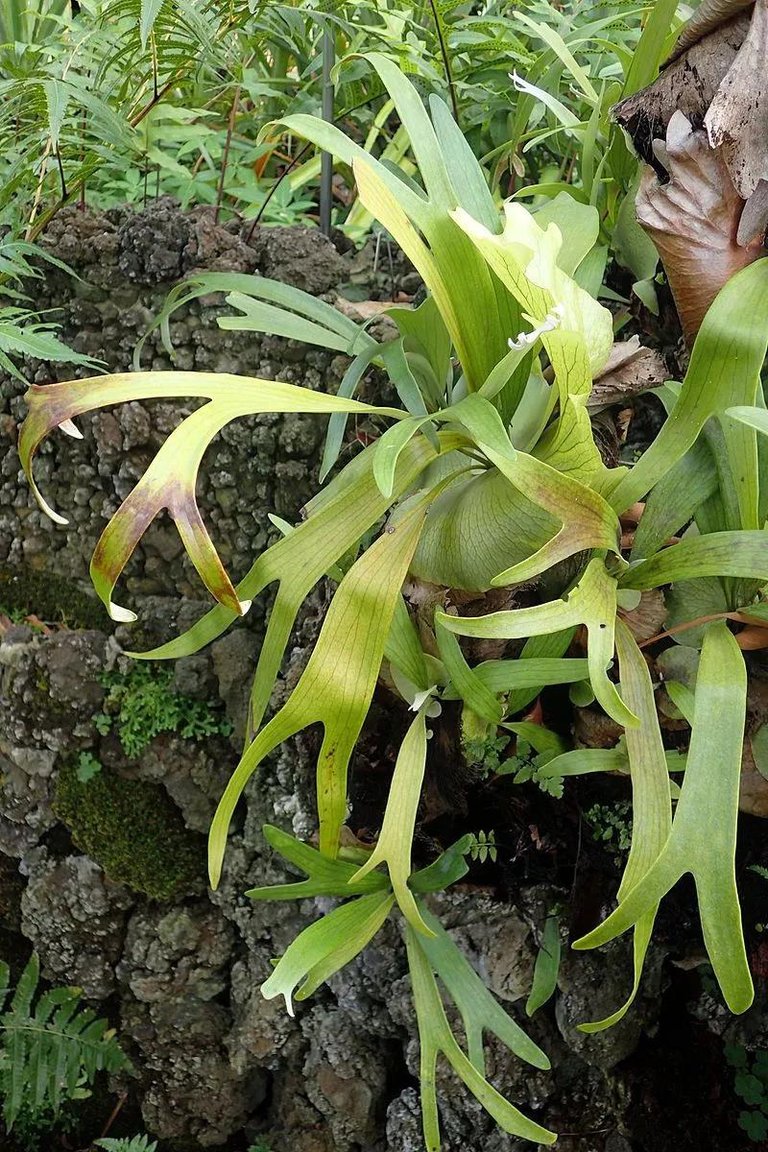
The staghorn staghorn fern is also dubbed by the fans as "Pulu"

Small deer planted on a snake board
If the family has the conditions, the space is large, and you want to create the atmosphere of the rainforest, then the Queen (P. wandae), the huge (also known as Suraby, P. suberbum), P. elephantotis and other large staghorn ferns are good choices. .

Huge Queen Antler Fern. Friends in the north can basically not produce this effect.
Planting points
The staghorn fern is generally used to arrange the landscape wall, and they can be wrapped in the roots with water moss or vermiculite, and can be fixed on the wall of the snake board; it can also be cultivated and hung in the moss ball.
Unlike other ferns, the staghorn fern has a waxy surface that delays evaporation of water, so they do not require high humidity and can be sprayed regularly to increase humidity. They also don't need direct sunlight, and indoor light can grow better if it is bright and transparent.
Rubber tree
Planting difficulty: ★ ★ ☆ ☆ ☆
The official Chinese name is Indian 榕, the scientific name Ficus elastica, Sanko is a genus of evergreen trees, native to South Asia and Southeast Asia.
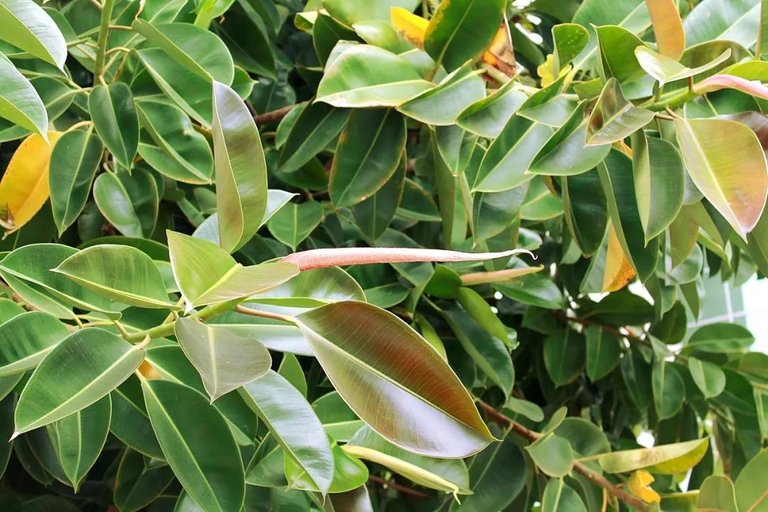
Rubber tree, if you naughty and cut its branches, you can see the white juice flowing out of the wound.
The elliptical blade of the rubber tree has a sharp tip and a thick leathery texture with a smooth surface. It was named for its early use as a rubber source. Nowadays rubber trees have been introduced to China. You can often see them in parks in the south or greenhouses in the north. The rubber trees planted in the open field can reach a height of about 30 meters.
The rubber tree leaves are mostly green, but after cultivation and breeding by horticulturists, there are now various varieties of foliage that are suitable for family cultivation.
Rubber tree black diamond: the leaves are purple-black, the main vein is reddish-brown, and the new leaf bracts are brilliant red.

Rubber tree kind of "black diamond"
Mosaic rubber tree: The edges of the leaves have white edges with irregular milky yellow patches. When the temperature difference is high, the white patches will be dyed red.
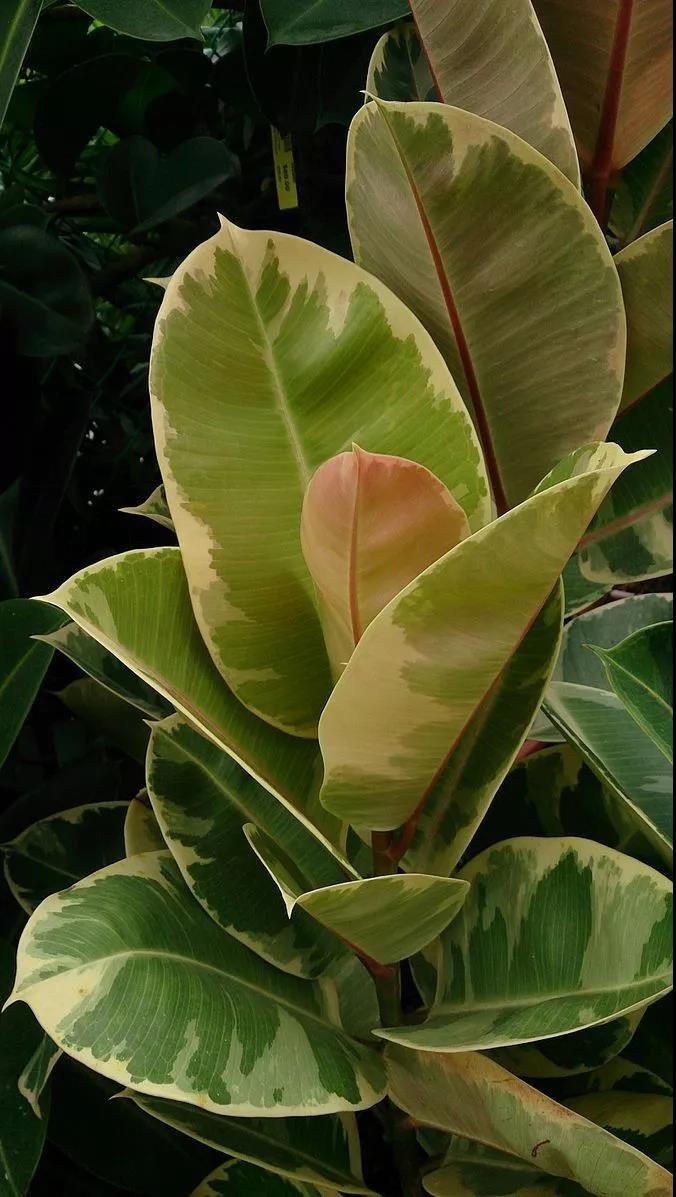
Mosaic rubber tree
Phnom Penh rubber tree: the leaves are green and the edges are gold.
Round leaf rubber tree: The leaves are small and round.
Planting points
The rubber tree leaves are wide and the plant type is conspicuous. It is suitable for placing in a more monotonous arrangement area with the lotus leaf ,, which plays a role in balancing the landscape.
Rubber trees are tropical or subtropical trees, and there is no stress in summer. However, if the indoor temperature in winter is lower than 10 °C, the growth will be slow or even stagnant. Below 5 °C will endanger the health of the plants.
Squid, begonia
Planting difficulty: ★★★☆☆
The big net red squid begonia is actually a cultivar Begonia maculata 'Wightii' of the begonia.
The original leaves are broad and have small white spots distributed, and the flowers are pink purse-like. The leaves of the squid begonias hang down like a long shield, the surface is dull dark green, and the top is covered with white big star points, so it is called the botanical Yayoi of the plant world. The back of the leaf is bright orange or reddish purple, just like the fish of the squid is bright.
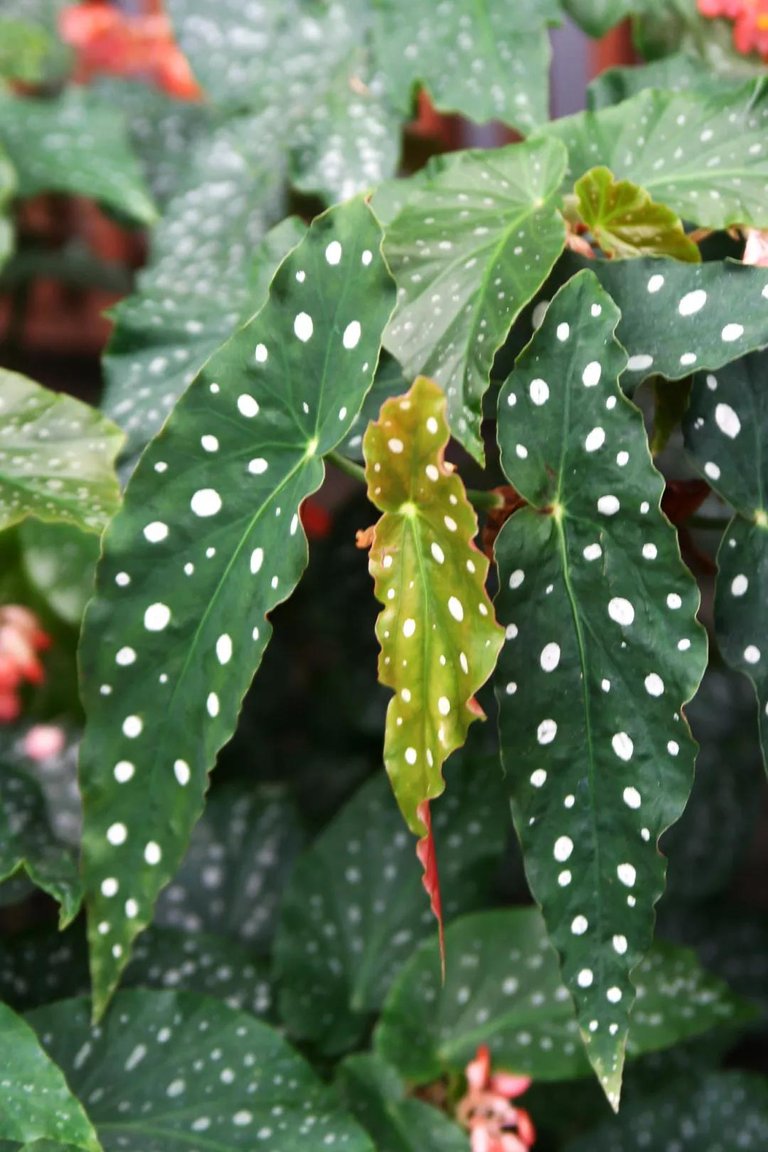
Squid, begonia
The squid begonias are light and light, and their colors are striking. They are suitable for matching with a plain stoneware pot, placed on a coffee table or a shelf, as a proper embellishment. It should be noted that the leaves of the squid begonia are brittle, and the leaves are easily damaged when purchased online, and it takes a period of maintenance to recover.
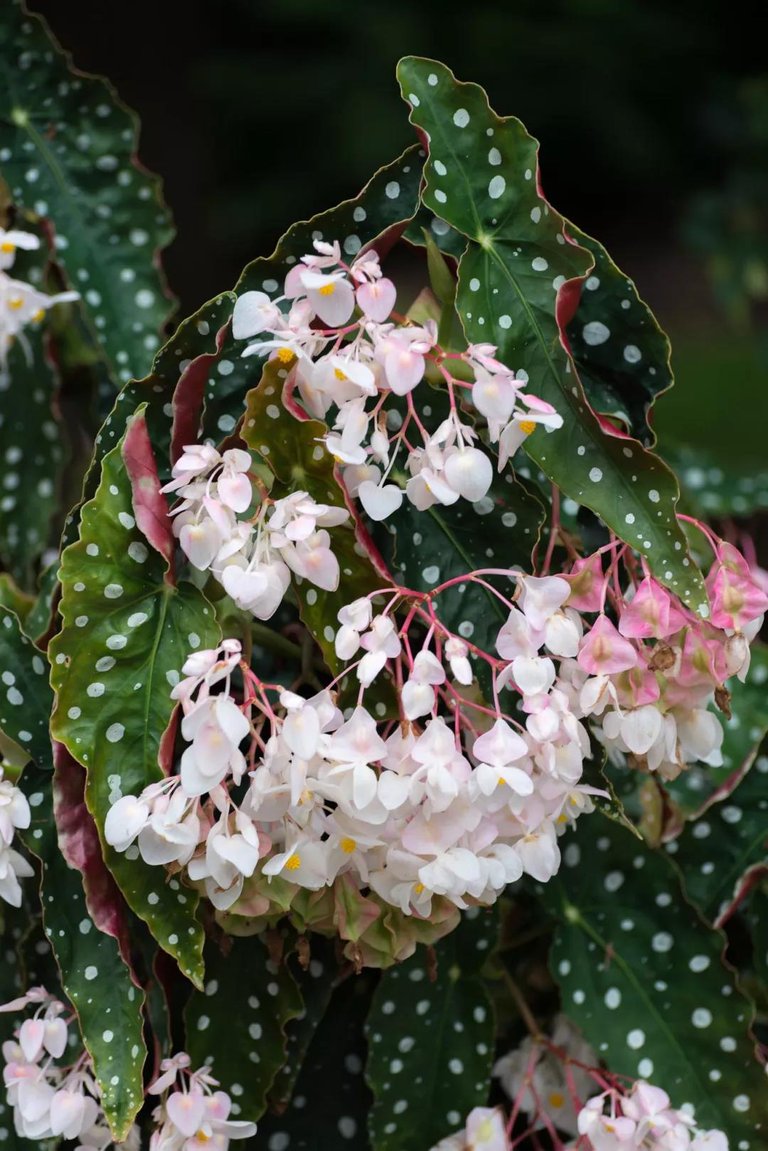
Flowering squid begonia
Planting points
The squid begonia is relatively simple to maintain, 15 ° C to 25 ° C is a suitable growth temperature, winter indoors can not be lower than 10 ° C, summer hot season try not to water frequently, to avoid rotten roots.
The plants introduced above are just six representative types of Ins Nordic home furnishing. I believe that there are more net red plant matching methods. In fact, as long as it can be coordinated with the overall style of the home, even the "boil smell" is a heavy money tree (Malabar chestnut), can also control this kind of cool and minimalist style. Experts out of the private, I hope that the comments can be seen more people can not help but want to point to 10,000 praises of the green plant matching program!
Woooww!!!! Amazing plants!!!
yep